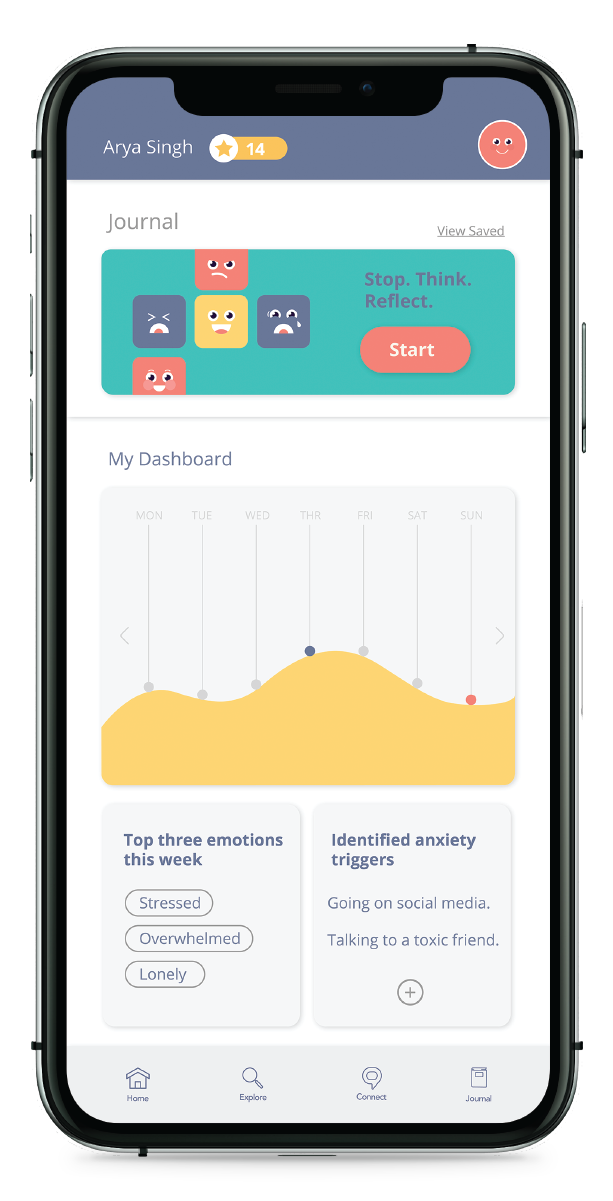
This summer, the COVID-19 pandemic perpetuated the mental health crisis that we were already facing as a nation. Difficulties like financial instability, and social isolation made the experience worse. I wanted to create an accessible product that served as a knowledge bank of mental health resources. The duration of the project was two weeks.

Create a knowledge back of mental health resources. Ensure the users can socially engage, participate in activities, and track their progress.
State of Mind is gamified, daily use application that serves as a mental health resource. It helps its users explore mindfulness techniques, socially engage in mental health dialogue, and track their progress through journaling activities. The user can also choose to enroll in courses which introduces the user to mental health topics and and coping mechanisms. As the user engages with the app, they can earn points and earn badges.



Users can explores thousands of resources. This includes videos, articles, and audio that explain mental health conditions, coping mechanisms, and mindfulness techniques.
Users can join communities and participate in forum discussions. This allows users to connect to the community, socially engage, and share their stories.
Journaling allows users to reflect. They can track their emotions, their anxiety triggers and their overall progress.



For my first phase of research, I read multiple online resources that highlighted how COVID-19 had affected our mental health. In addition to general research, I also conducted a quick survey, asking my target users to identify some pain points they faced during quarantine. I also asked them to list any mental health symptoms and coping mechanisms that they observed. All responses were based on the direct result of the pandemic.



During ideation, I started out by sketching out a mind map. I wanted to understand what features would enable my users to learn, connect, and reflect on their state of mind. I also ideated on how I could keep the user engaged, ensuring that they use the application in their daily routine.

if Arya has mental health resources readily available, she may have a better time dealing with her anxiety. With mental health education at her fingertips she can take better care of herself.
Arya doesn't have any direct social support. Introducing social support, especially during times of adversity, she will have a community she can turn to.
Arya seems to go through each day, feeling numb, and anxious. If Arya is encouraged to reflect on her thoughts and actions, she might be more mindful, encouraging her to stay positive.


Accessibility: People who have been financially affected by the pandemic has the most need for resources, especially free resources. If I had more time I would consider how I could make this app more accessible.
More than an application: The project scope can be expanded into an organization. Users can attend in-person events, choose to participate in live therapy, and purchase merchandise to show solidarity. By expanding outreach, the organization can destigmatize mental health.
Interested in learning more?
Contact me at: lavanyagunturi@gmail.com ✉️
if you want to talk further about my work!